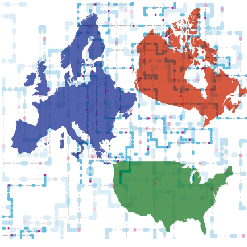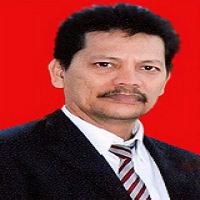GOVERNANCE OF AGENDA SETTING
Keywords:
schedule, governance, citizenship, framing, entrepreneurshipAbstract
Although the phenomenon of the establishment of the sociopolitical agenda has been studied in different contexts, the contrast of empirical models from its psychological dimensions has been confined to the prediction of group differences. In this sense, the groups differ by age in reference to issues that were disseminated in the press from government decisions. The objective of this research is to test a model of reflective relations agenda setting from eight psychological dimensions. They conducted a cross-sectional study and a nonrandom sample of 312 students was used to estimate the normal distribution, reliability, validity, covariance structure and model fit [ , RMSEA = 0.001]. The results show that the dimension of attitudes in a relationship of dependency with the agenda setting (β = 0.81). Referring to the studies reported in the literature the results were discussed.
Downloads
References
Carreon, J. (2014). Towards a consensual administration of water resources in ecocities. Interdisciplinary, 31, 1-12
Cerviño, B. (2013). The use of social networks as a source of information for journalists. Doctoral thesis. Communication Sciences Faculty. Autonomous University of Barcelona.
García, C. (2012). Press coverage regarding complaints, supplies and locations in the face of a water shortage in Iztapalapa, Mexico. Society Today, 22, 93-113
Latorre, E. (2011). Visibility of the memory of the victims of violence in the department of Magdalena: Resilience to build legal truth. Prolegomena, Rights and Values, 27, 199-212
Rodríguez, F. (2010). Xenophobic speech and agenda setting. A case study in the press of the Canary Islands (Spain). Latin Journal of Social Communication, 65, 222-230
Sánchez, S. (2012). Social representation of rare diseases in the Spanish press. Journal of Social Sciences, 54, 1-31
Von Kogh, T. (2012). Changing political attitudes towards media accountability in Sweden. Central European Journal of Communication, 2, 204-224
Wasike, B. (2013). Framing news in 140 characters: how social media editors frame the news and interact with audiences via Twitter. Global Media Journal, 6, 5-23

Downloads
Published
How to Cite
Issue
Section
License
Copyright (c) 2023 Clinical Images and Case Reports

This work is licensed under a Creative Commons Attribution 4.0 International License.
Clinical Images and Case Reports












